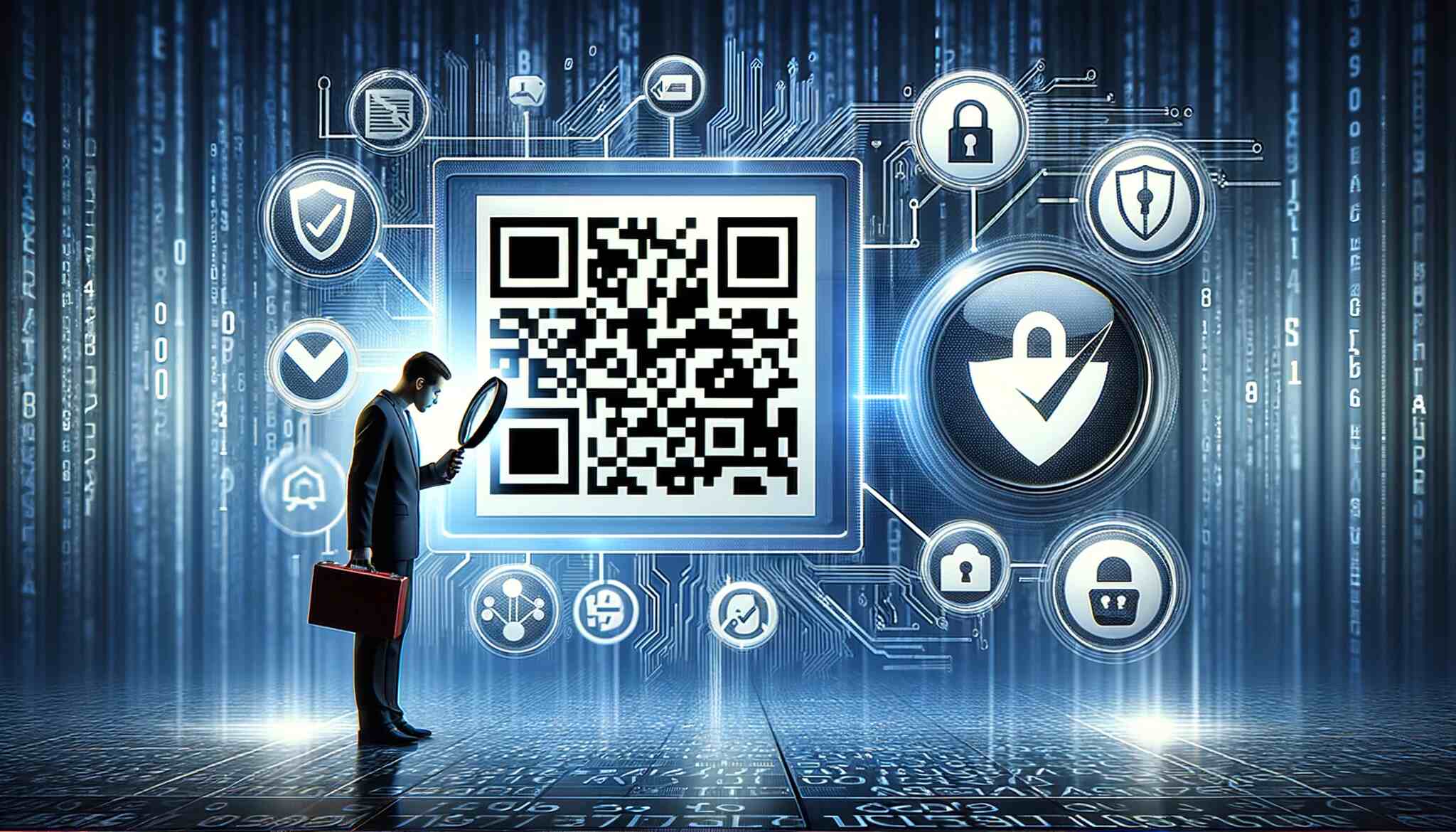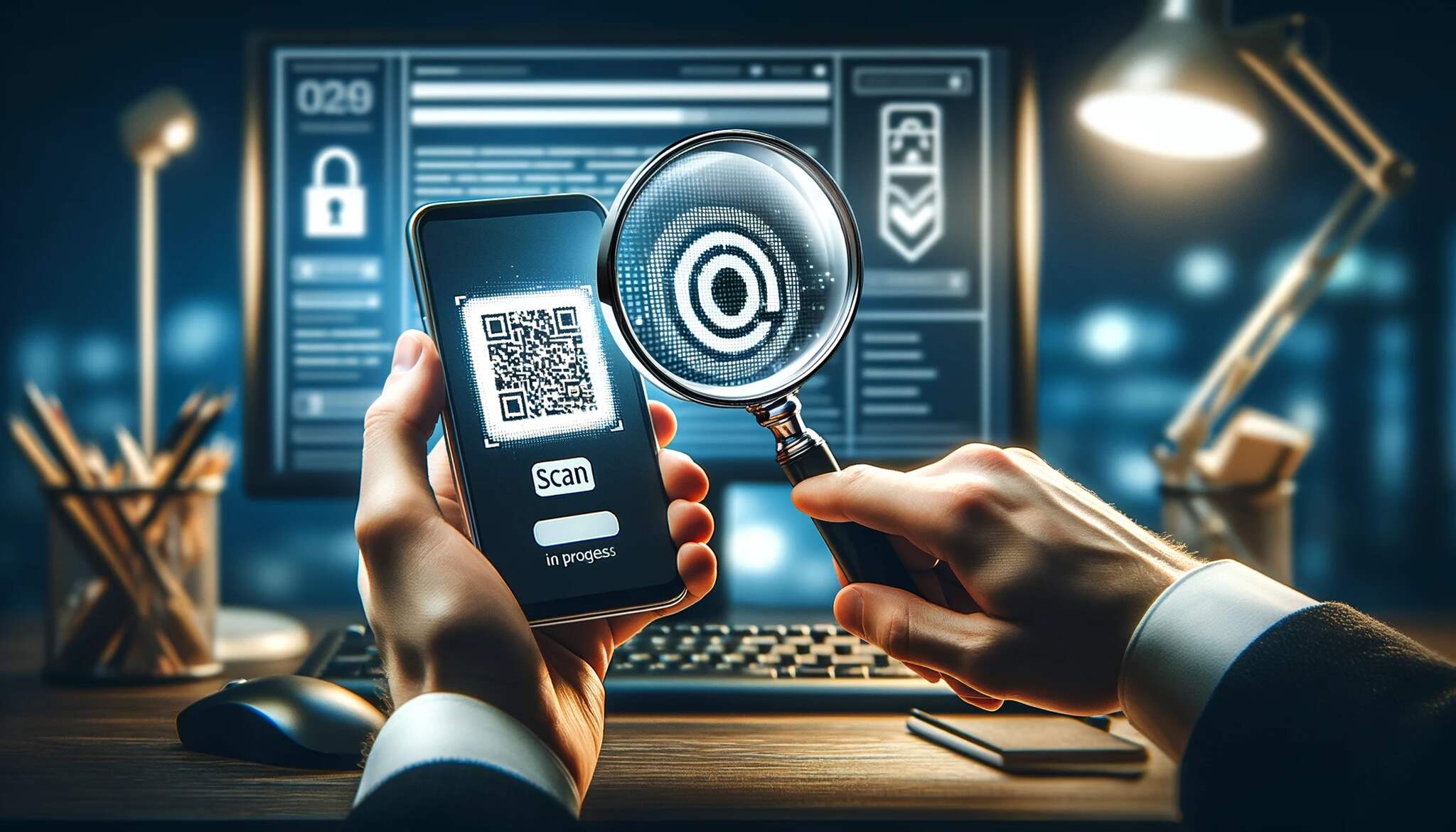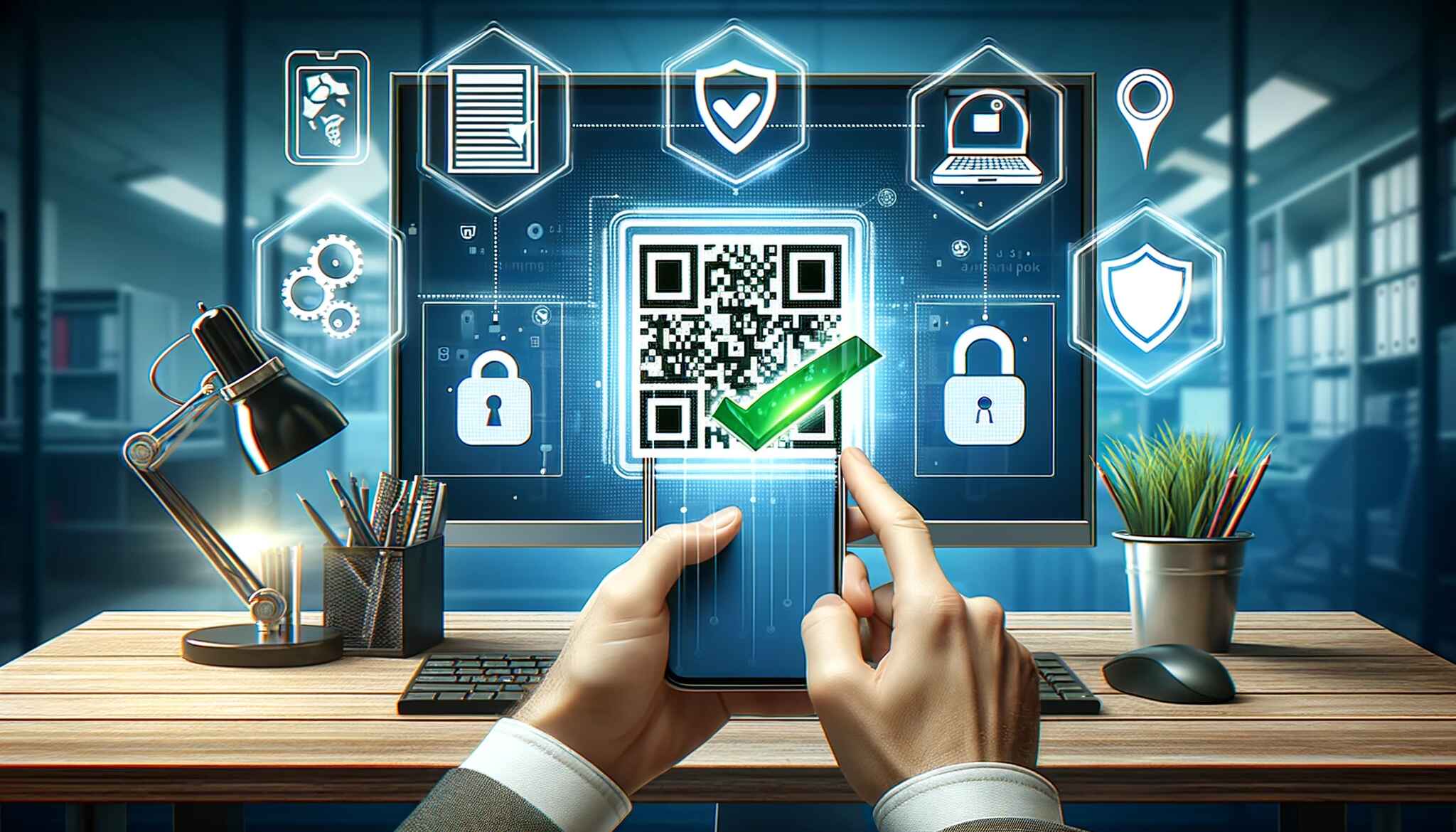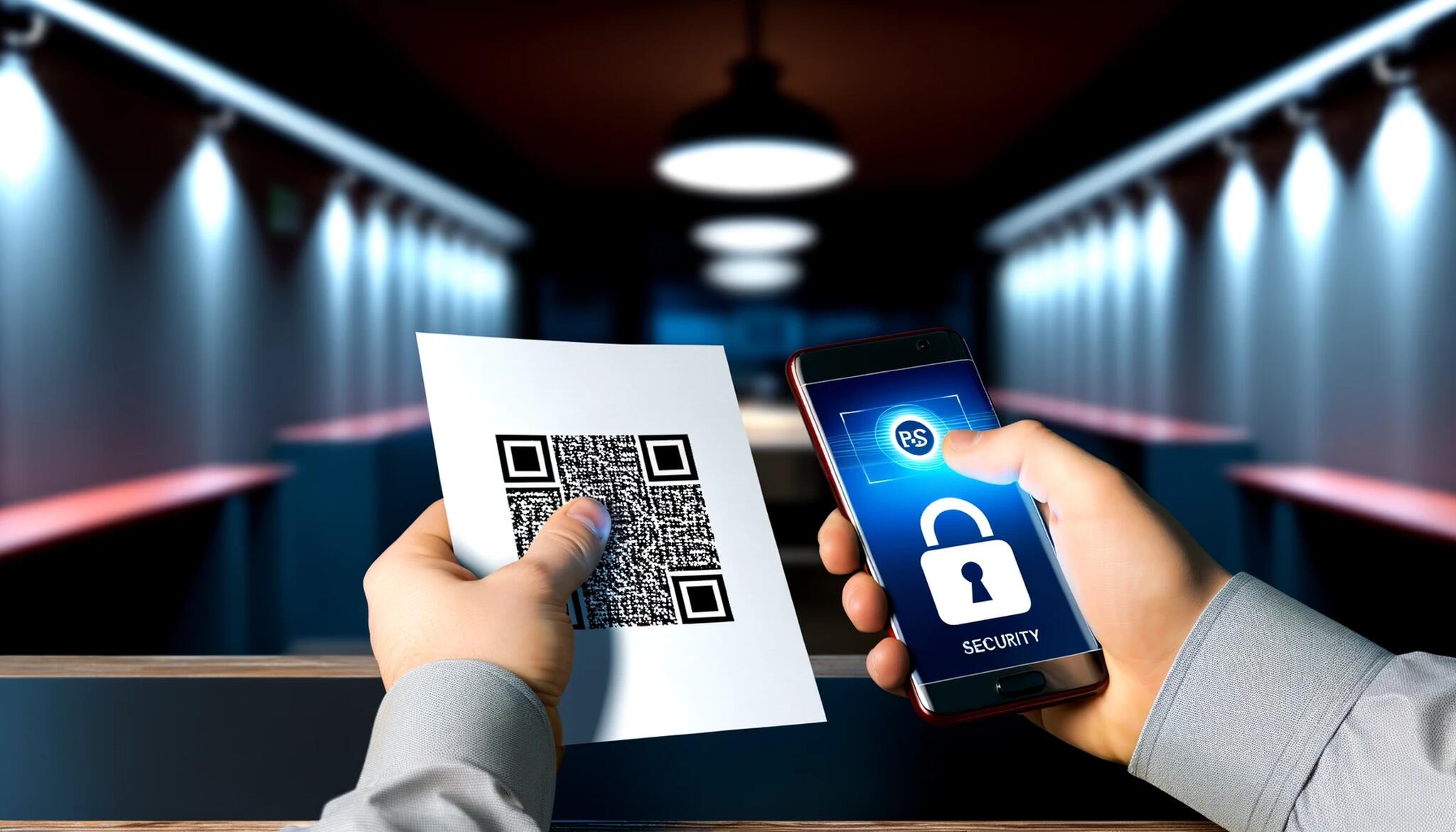QR codes' ability to store diverse information from website URLs to phone numbers and even app download links has catalyzed their adoption across various sectors, including marketing, supply chain management, and public health, making understanding QR code security and learning how to check if a QR code is safe essential in safeguarding personal data.
This guide will explore the risks associated with unsafe QR codes, outline steps to verify a QR code's safety, and provide protective measures to ensure your data remains secure, ensuring readers are well-equipped to navigate the evolving landscape of QR code security effectively.
Risks Associated with Unsafe QR Codes

QR codes have become ubiquitous in our digital landscape, offering a bridge between physical touchpoints and online resources. However, their convenience also presents a myriad of risks that can compromise personal and financial data.
Understanding these risks is crucial for safe QR code usage:
Social Engineering and Phishing Attacks:
- Email-Based Phishing: Cybercriminals may embed malicious QR codes in emails, masquerading as legitimate communications. Upon scanning, these QR codes can direct users to phishing websites designed to harvest personal information.
- Replaced Genuine QR Codes: Scammers can physically replace authentic QR codes with fraudulent ones in public spaces, leading unsuspecting users to harmful sites.
- Clickjacking: This technique involves embedding malicious content within a legitimate-looking QR code. Once scanned, it can trigger unauthorized actions, such as downloading malware or redirecting to phishing sites.
Exposure to Malicious Sites and Malware:
- Directing to Harmful Sites: Scanning a QR code might seem harmless, but it can lead users straight to websites that host malware, phishing schemes, or other malicious content designed to steal personal information or infect devices.
- Infection with Malware: Threat actors leverage QR codes to distribute malware, turning a simple scan into a gateway for cyberattacks. This can result in the theft of personal data, financial information, and even control over the infected device.
Financial Data Risks:
- Theft of Financial Information: QR codes used for transactions can be manipulated to redirect payments to the attacker's account or to clone credit card information when used on spoofed payment gateways.
- Personal Data Harvesting: QR codes can prompt users to enter sensitive information under the guise of verification processes, leading to direct data theft.
Given these risks, it's paramount to approach QR codes with caution. Always verify the source of a QR code before scanning, especially in public places or when received via email. Checking the URL after scanning to ensure it matches the expected website and being wary of entering personal or financial information are critical steps in maintaining security.
What to Do If You've Scanned a Suspicious QR Code

If you've scanned a suspicious QR code, quick and decisive actions are necessary to mitigate potential risks to your personal data and device security. Here's a step-by-step guide on what to do next:
Immediate Actions:
- Disconnect from the Internet: This prevents scammers from accessing your device online. Turn off Wi-Fi and cellular data immediately.
- Navigate Away from Suspicious Sites: If the QR code directs you to a dubious website, exit it without clicking on any links or entering any information.
- Avoid Downloading Unverified Apps: If prompted to download an app, refrain from doing so unless you can verify its legitimacy through another trusted source.
Securing Your Device and Accounts:
- Run an Antivirus Scan: Utilize a reliable antivirus program to check for malware. If any is found, follow the software's instructions to remove it.
- Change Passwords: Update all passwords stored in browsers, password managers, and apps. Consider enabling two-factor authentication for added security.
- Check Browser for Hijacking Signs: Look for unexpected changes in your browser settings or homepage and take steps to remove any unauthorized alterations.
- Review Device Settings: Pay special attention to privacy settings to ensure no unauthorized changes have been made.
Financial Precautions:
- Block Credit Cards: If you suspect that scanning the QR code resulted in unauthorized transactions, contact your bank to block your cards immediately.
- Contact Your Bank: Inform your bank of the potential scam to monitor for suspicious activities and prevent further damage.
- Fraud Alert and Credit Freeze: Consider setting up a fraud alert and a credit freeze with major credit bureaus to protect against identity theft.
How to Verify a QR Code's Safety

To ensure the safety of a QR code before scanning, consider the following steps:
Verify the Source
- Unknown Sources: Exercise caution when using QR codes from unknown origins. Confirm the sender's identity to ensure it's not a phishing attempt.
- Reputable Sources: QR codes from well-known and reputable sources are generally safer. Verify the authenticity of the source before proceeding.
- Public Places Warning: Be skeptical of QR codes found in public spaces, such as bus stops or flyers. Scammers may replace legitimate QR codes with fraudulent ones.
Examine the QR Code and URL
- Check for Tampering: Look for any signs of manipulation in the QR code, including unusual text, logos, or colors that don't match the brand.
- URL Preview: Use a QR code scanner to preview the URL. This allows you to review the destination before visiting the site.
- HTTPS Protocol: Ensure the URL starts with "https, " indicating a secure, encrypted connection. Be wary of URLs that are misspelled or don't match the expected destination.
Use Safe Scanning Practices
- Safe QR Code Scanners: Opt for reputable QR code scanning apps or use the native scanning feature in your smartphone's camera app.
- Avoid Third-party Apps: Refrain from downloading any applications suggested by the QR code without verifying their legitimacy.
- Antivirus Software: Keep your device protected with up-to-date antivirus or anti-malware software to reduce the risk of infection from malicious sites.
By adhering to these guidelines, you can significantly reduce the risk of encountering unsafe QR codes. Always prioritize caution and verify the QR code's safety to protect your personal and financial information.
Protective Measures to Safeguard Your Data
To bolster your defenses against QR code threats, here are strategic protective measures:
Verify and Secure
- Source Verification: Always confirm the sender's identity before engaging with a QR code. This is especially crucial for codes received from seemingly known contacts or found in public spaces.
- Use Built-in Scanners: Opt for your smartphone's native QR code scanner over third-party apps to reduce the risk of inadvertently downloading malicious software.
- Select Secure QR Generators: Choose reputable QR code generators that comply with data privacy laws, such as GDPR, to ensure the protection of user data.
- Antivirus Protection: Install reputable antivirus software on your mobile devices to ward off malware and other cyber threats.
Best Practices for QR Code Creation and Scanning
- Creation Compliance: When generating QR codes, especially for business purposes, ensure the use of SSL-certified webpages and invest in compliant QR code generators that offer password protection and data encryption.
- Scan Safely: Before scanning, visually inspect the QR code for any signs of tampering and verify the URL's legitimacy, looking for HTTPS protocol to ensure a secure connection.
- Information Caution: Practice caution when prompted to enter login, personal, or financial information after scanning a QR code. If in doubt, verify the request's authenticity through alternative means.
Advanced Security Measures
- Dynamic QR Codes: Implement dynamic QR codes that allow for regular updates, minimizing the risk of security breaches and protecting your audience from potential threats.
- Authentication Mechanisms: Use Single Sign-On (SSO) and Multi-Factor Authentication (MFA) for added security layers, especially for sites that handle sensitive information.
- Regular Audits and Education: Conduct regular security audits on QR codes used in various applications and educate users about the potential risks and best practices for safe scanning.
By adhering to these comprehensive protective measures, individuals and businesses can significantly mitigate the risks associated with QR code usage, safeguarding personal and financial data from potential cyber threats.
Best Practices for Safe QR Code Scanning

Adopting best practices can significantly mitigate risks when it comes to ensuring the safety of QR code scanning. Here are some guidelines tailored to enhance security while engaging with QR codes:
Placement and Design:
- Ensure QR codes are placed in easily accessible locations, avoiding areas that might pose a safety risk.
- QR codes should be of an appropriate size and high quality to guarantee easy scanning.
- Incorporate your brand's logo and colors into the QR code design for easy identification.
- Avoid color inversion; the foreground should always be darker than the background to maintain scanability.
Content and Security:
- Link to content that is relevant, mobile-optimized, and leads to a page with a clear call to action.
- Use SSL certification for websites linked by QR codes to ensure a secure connection.
- Opt for dynamic QR codes for data collection while respecting user privacy. Be transparent about the data being collected.
- Implement the intended action only on the landing page without adding unnecessary extras, and ensure the page is optimized for mobile users.
Scanning Safely:
- Use the native QR code scanning capability within your smartphone's camera app rather than third-party applications to avoid malware.
- Before clicking through, verify the URL or URI for any signs of malicious intent.
- Practice caution when entering personal, login, or financial information on sites navigated from a QR code. Always manually enter known and trusted URLs for payments instead of using QR codes.
- Treat QR codes with the same caution as any other link on the internet; be wary of providing personal information or downloading apps from QR codes.
Common Types of QR Code Scams
Understanding the common types of QR code scams can significantly enhance one's ability to navigate digital spaces safely. Here's a breakdown of prevalent QR code scams:
Email and Social Media Scams:
- Phishing Emails: Scammers craft emails requesting credit card details, embedding malicious QR codes leading to fraudulent sites.
- Social Media Platforms: Fake QR codes are distributed, aiming to steal personal information or install malware on devices.
Public and Unexpected Scams:
- Payment and Package Scams: QR codes placed in public settings, such as parking meters or on suspicious packages, redirect to fake payment portals or websites asking for personal details.
- Restaurant and Retail Scams: Fraudulent QR codes in eateries or retail outlets can lead to phishing sites designed to steal personal data.
Specific Scenarios and Malware:
- Cryptocurrency and Donation Frauds: Scammers impersonate charities or offer bogus investment opportunities, using QR codes to siphon off funds.
- Fake Apps and COVID-19 Scams: Malicious 'scanner apps' and QR codes at sham testing centers are utilized to commit identity theft or financial fraud.
Incorporating these insights into one's digital practices can significantly reduce the risk of falling victim to these sophisticated scams.
Using QR Codes Safely

When creating QR codes, prioritizing security is paramount to protect both your data and the integrity of the QR code itself. This focus on security ensures the safe transmission of information and preserves the credibility of the QR code as a reliable tool.
Here are some essential practices to consider:
Secure Creation Process:
- Utilize reputable QR code generation platforms that offer encrypted data capabilities.
- Regularly update the platform's security measures to guard against new vulnerabilities.
QR codes, by themselves, do not inherently pose significant risks. However, the websites or applications they link to can be potential sources of threats. Therefore, understanding the nature of QR codes as merely a gateway is crucial.
This perspective encourages a more informed approach to scanning and creating QR codes, focusing on the end targets' security.
Target Verification:
- Always ensure that the destination website of the QR code uses HTTPS to signify a secure connection.
- Regular security checks on the linked websites are conducted to maintain a safe user experience.
QR codes have revolutionized digital security, offering a versatile solution for various security needs. Their application ranges from replacing traditional physical keys to facilitating secure online logins, significantly enhancing security measures in both physical and digital realms.
Applications in Digital Security:
- Physical Access Control: QR codes can replace traditional keys or access cards, reducing the risk of unauthorized duplication or sharing.
- Online Security: They serve as an effective method for two-factor authentication, adding an extra layer of security beyond just passwords.
By integrating these practices, QR codes can be utilized safely and effectively, ensuring their convenience and efficiency are not overshadowed by security concerns.
Conclusion
By adhering to the best practices outlined, individuals and businesses can leverage QR codes' convenience and innovative potential without compromising security.
The significance of staying informed about QR code safety cannot be overstated, as it protects personal and financial data and maintains the integrity of digital interactions.
Through collective efforts in prioritizing security, we can ensure the sustainable and safe adoption of QR codes in our increasingly digital world.
Frequently Asked Questions
How can I determine the safety of a QR code?
To check the safety of a QR code, preview the URL it directs to by using your phone's camera or a QR scanner app. Your device should display the destination URL. Examine the URL for legitimacy and be wary of shortened, unreadable URLs, which could be suspicious. If you're at a business location, like a restaurant, don't hesitate to ask a staff member about the QR code.
What steps should I take to validate a QR code?
Validating a QR code is straightforward. Use your phone's camera app to scan the QR code. If the code is valid and functional, your phone will show you what actions or information associated with the QR code can be taken. This helps confirm that the QR code is working as intended.
How can I tell the difference between safe and harmful QR codes?
To differentiate between safe and harmful QR codes, always scrutinize the source of the QR code before scanning. Be particularly cautious with QR codes found in public spaces or received from unknown sources, as scammers could have altered them to replace legitimate QR codes with fraudulent ones.
Discover our latest blog posts:


